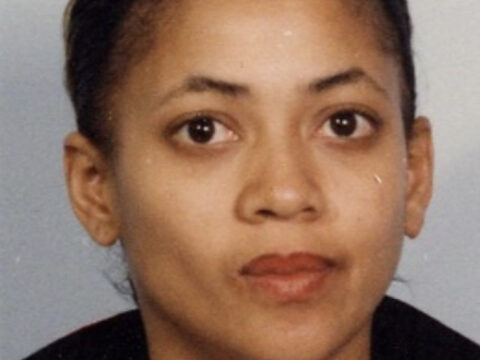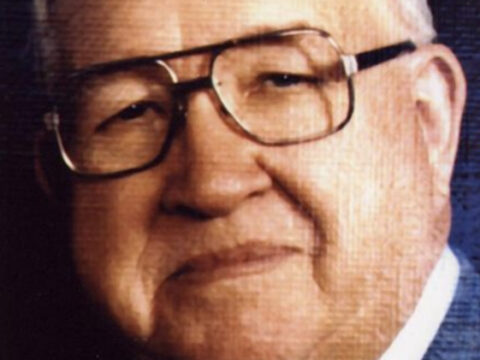Cold case unit taking a fresh look at decades of unsolved crimes [2008]
Supported by a $500,000 federal grant, veteran Minneapolis homicide Sgts. Tammy Diedrich and Barb Moe will consider cases with the greatest potential for solving, dating back to 1972.
By David Chanen Star Tribune JANUARY 21, 2008 — 11:39PM
If you have any information about the 1979 murder of Suzanne Sayles, please contact the Minneapolis Police Department at 612-673-2941.
Marilyn Sayles’ pain won’t go away, not even 28 years later. [This article is from 2008. Suzanne father passed away in 2009 not knowing who killed her]
It was a warm May evening when her daughter Suzanne was raped and strangled in a cozy Minneapolis studio apartment. Over time, detectives spent hundreds of hours working the case. But Suzanne Sayles’ killer remains a mystery.
Sayles’ murder will get fresh eyes and a boost from vastly improved DNA technology from the Minneapolis Police Department’s new cold case unit, started this month.
Supported by a $500,000 federal grant, veteran homicide Sgts. Tammy Diedrich and Barb Moe will consider cases with the greatest potential for solving, dating back to 1972.
Their initial targets include a man killed downtown 10 years ago and a series of possibly connected homicides of men from the 1980s.
The Sayles case is an exception. Under normal circumstances, victims’ relatives won’t learn whether detectives have reopened an investigation until they’ve nailed a suspect or come up empty.
“Sure, it gets your hopes up,” Marilyn Sayles said. “But I want to find out who killed my daughter before I die.”
Solving cold cases isn’t quite the way it’s portrayed on the popular television show. Lt. Amelia Huffman, head of the homicide unit, said it’s not like a detective opens a box from the archives and two weeks later a suspect is in custody giving a full confession.
“And looking glamorous doing it,” she said.
More than 400 cases were evaluated, which meant going through box after box stored in a warehouse. The key for any case to be selected is the availability of physical evidence for DNA testing that has been stored properly and not contaminated. Only 100 met the criteria.
“Now, you only need a sample for testing that is the size of a pinhead,” Huffman said.
Even with good evidence, the detectives will encounter difficulty tracking down witnesses with fading memories and suspects who continue to avoid police. And the killer they are hoping to find may be dead.
Before Moe and Diedrich choose a case, they consult with the Hennepin County attorney’s office and medical examiner’s office to make sure it’s a realistic target for prosecution. While law enforcement agencies usually have a long wait for DNA results, the Minneapolis Police Department funded two analysts working at the Bureau of Criminal Apprehension’s lab dedicated to Minneapolis cases only.
Coming back to homicide
Moe and Diedrich have nearly 20 years of homicide investigation experience between them. Huffman called the pair “the kind of people you would want for one more look at an unsolved homicide.”
Both detectives are returning to homicide to take this assignment.
“I loved the job and still love the job, but it was starting to take over my life,” said Moe, who left the homicide unit in 2002. “I’d go to a movie with my husband and ask him if we should drive separately in case my pager went off.”
She solved her share of high-profile murders. But Moe recalls with frustration the cases “when you do everything humanly possible” and the killer is still out there. She and her partner were the first team to work on the unsolved death of 11-year-old Kevin Brewer, who was shot by a stray bullet during a gang fight in 2000.
Two years later, Diedrich handled a similar case involving Tyesha Edwards. The 11-year-old was studying in her home when a bullet shot by a gang member pierced a wall and killed her. Police made an arrest, but the suspect was granted a new trial.
The pace of working cold cases is much slower than the aggressive approach detectives need to take on a new homicide. Cold cases involve digging through evidence stored at the warehouse, duplicating pictures, waiting for information from forensic experts and DNA results.
“I get antsy,” she said. “But I could work these cases 16, 17 hours a day.”
The federal grant for the cold cases expires in June 2009, which puts stress on the detectives to close as many cases as possible. Huffman said the department plans to apply for another grant. Minneapolis was one of 21 cities to receive funding this year.
Going back for blood
On the surface, it appeared the murder of 24-year-old Suzanne Sayles could be quickly resolved. There were hundreds of pieces of evidence, including fingerprints. Suspects were interviewed, but no arrests were made. Sgt. Bernie Bottema, one of the original investigators, said her murder obsessed him.
The suspect’s blood may be on clothing discarded during the struggle. Sayles bit her assailant during the attack. The case became one of the first in the country in which a psychological profile of the suspect was developed.
For now, Moe and Diedrich are mum on the case’s status.
Sayles’ mother, Marilyn, is happy that detectives continue to push on and want the killer to be punished. At 76, she doesn’t think she and her husband, Robert, 79, would be able to make the trip from Austin, Minn., to face the man in court.
“We’re getting up there in years,” she said. “We’ll have to wait and see.”
Obviously there was no arrest in the murder of Suza
Views: 11









 Total Users : 5712427
Total Users : 5712427
One of the original detectives told me he was almost positive the killer had left Minnesota and was now living in Texas. That detective, who is now dead, told me he had written a letter to the killer, accusing him of the murder. He went on to say he had considered going to Texas to kill the killer, but still had a slight element of doubt.
Hi Thomas!
I wish they had solved it already! From reading your comment, sounds like they know who did it. While he will probably never be charged he lives a free life! I wish his conscience would kill him! Thanks for commenting. If you have anymore info, I will add it to the article! Thanks, Colleen!
As the we the classmates of Suzanne get ready for our 50th reunion, we still wonder why our grind and classmates murder has not been solved. With the advances in DNA and how they are now able to now locate people thru genetic ancestry. I believe that the MPD need to really take an another look at this case! She was an amazing girl on the cusp of a new life and a new relationship and was cut down in the prime of her life!!! MPD owes her another look into what happened.
Cheryl you and your classmates need to start calling MNBCA and tell them to open her case again!!
Here’s a phone number and email: 651.793.7000 or email bca.coldcase@state.mn.us